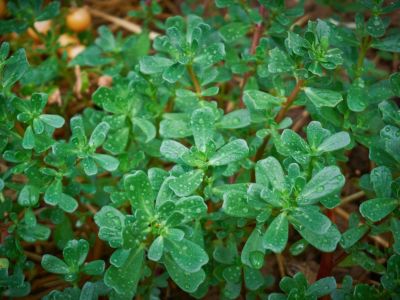What is Purslane?
Purslane (Portulaca oleracea) is an herb that is native to Asia, but has spread all across the world. It is commonly found in cleared areas. The purslane herb has red stems and fleshy, green leaves. The flowers are a bright yellow. Purslane is high in Omega-3 fatty acids and contains vitamin A, vitamin C, vitamin B, magnesium, calcium, potassium, and iron. All in all, edible purslane is a very healthy plant to add to your diet.
Growing Purslane
The hardest part about growing purslane is finding it. Once you have decided to grow purslane, you may find that although you have been pulling it out of your flower beds for years, it has suddenly disappeared. Once you do find a purslane plant, you can either harvest some seeds or trim off a few stems. All purslane needs to grow is part to full sun and clear ground. The plants aren’t picky about soil type or nutrition, but purslane does tend to grow better in drier soil. If you decide to plant purslane seeds, simply scatter the seeds over the area where you plan on growing the purslane. Don’t cover the seeds with soil. Purslane seeds need light to germinate so they must stay on the surface of the soil. If you are using purslane cuttings, lay them on the ground where you plan on growing purslane. Water the stems and they should take root in the soil in a few days.
Care of Purslane Plant
The care of purslane is very simple after it starts growing. You don’t need to do anything. The same traits that make it a weed also makes it an easy to care for herb. Make sure to harvest it regularly and be aware that it can become invasive. Harvesting before it develops flowers will help cut down on its spread. Also, keep in mind that purslane herb is an annual. While the chances are high that it will reseed itself, you may want to collect some seeds at the end of the season so that you have some on hand for next year, rather than hunting for a new purslane plant. If you decide to harvest wild purslane instead of growing purslane, make sure that you only harvest purslane that has not been treated with pesticides or herbicides.
